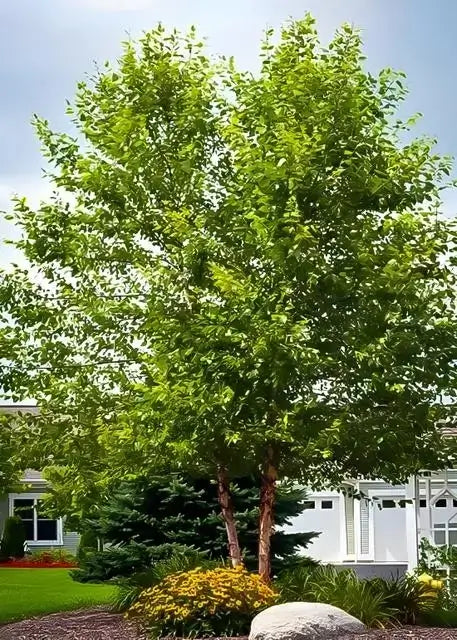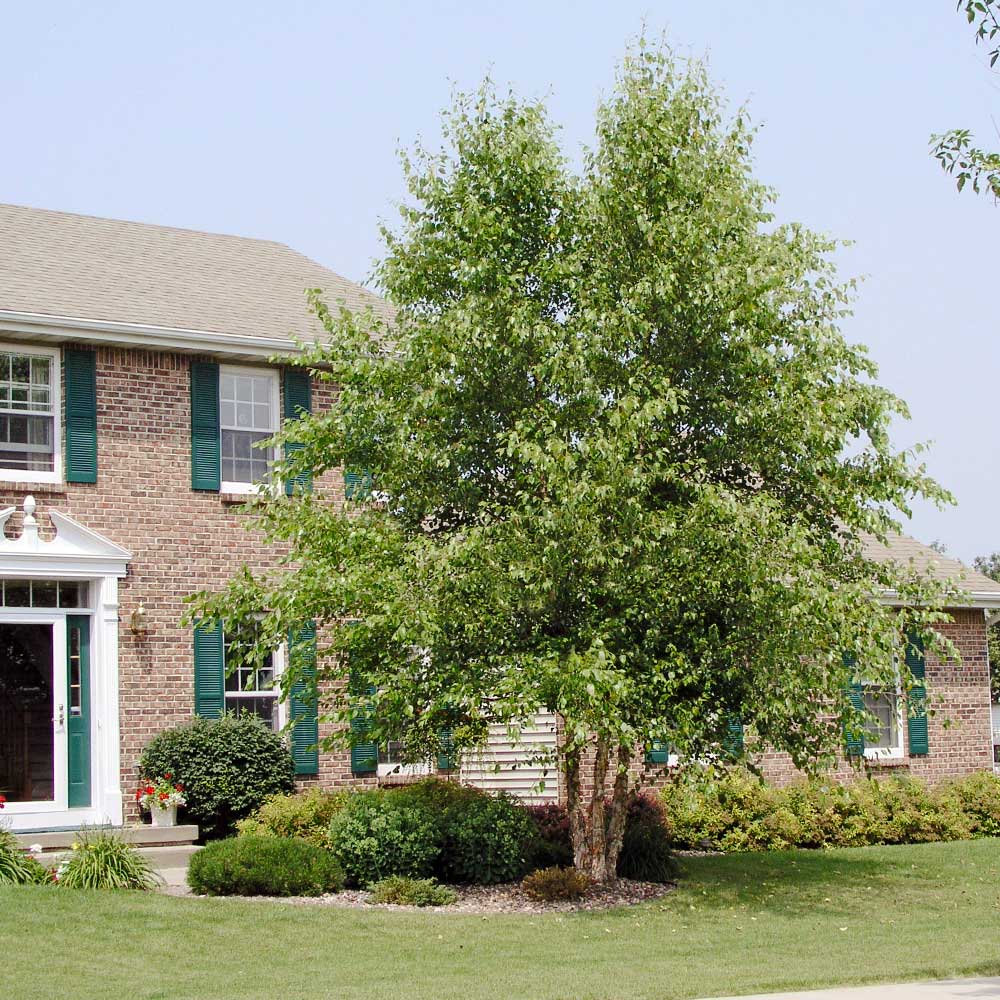River Birch Trees For Sale
The River Birch Tree, scientifically known as Betula nigra, will make a stunning statement in your yard. This deciduous tree has distinctive, exfoliating bark and an elegant stature. It is a beautiful deciduous, multitrunked tree recognized by its naturally exfoliating bark. It is native to the southern states.
This is a tree that grows fast and will make an impact on your landscape quickly. Plant in a park or garden, or along a stream. This is a great tree for creating a shade garden, an inspired garden, or as a focal point in an ornamental garden.
River Birch Tree Details
Family: Betulaceae
Light Requirement: Full Sun
Water Needs: Moist
Height: 25 – 40 ft.
Spread: 20 – 30 ft.
Growth Rate: Fast
Bloom Time: Spring
Flower Color: Brown
Wildlife Value: Attracts butterflies, birds
Landscape Uses and Maintenance
Plant this tree in a location with full sun to partial shade. Full sun will allow it to grow quickly. Its leaves are green and diamond-shaped. From late winter to early spring, this tree produces two types of small catkins, both inconspicuous.
As its name suggests, this tree grows well in wet sites. If you are planting it on a drier site, make sure to water it deeply and routinely. Water it thoroughly when first planted until it is well established. This tree can tolerate many types of soil, including clay, as it holds more moisture, and it will tolerate flooding. It prefers acidic soil.
River Birch Tree will attract many wildlife to your landscape, including pollinators, birds, and small mammals. Are you having deer problems? This tree is deer-resistant. Watch this tree for signs of chlorosis or bark borers.
Noteworthy Characteristics
The River Birch Tree has beautiful, red brown exfoliating bark. Since it can grow in wet sites, it is a great option for erosion control. Plant them and they will come! This native tree will attract many butterflies to your yard. It is a host plant for the Mourning Cloak and Dreamy Duskywing butterfly.
Exposure
The River Birch Tree grows well in the sun to part shade. It needs at least 4 hours of total sunlight daily. However, it can accept some shade, particularly in hotter climates, making it flexible to various light conditions.
Height at Maturity
Over 25 Feet
Usage
Fast Growing
Shipped As
Bare-root
Ships
UPS
Planting Zones
4-9







